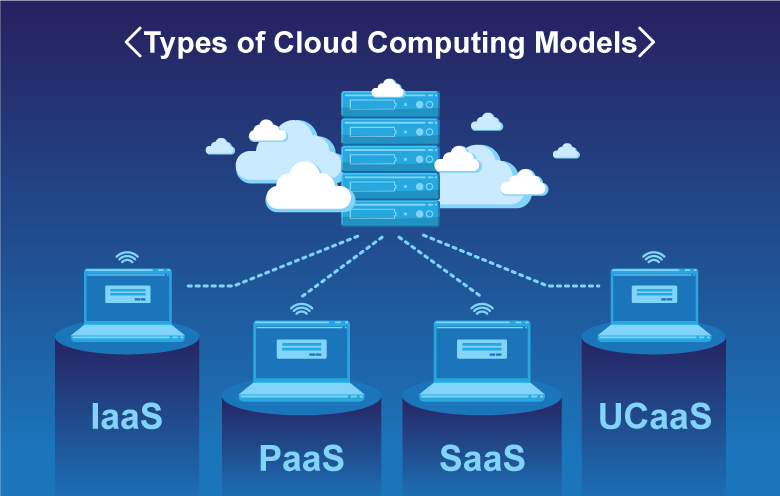How to Make Money Selling Cloud Services: A Profitable Business Venture
In today’s digital age, businesses increasingly rely on cloud services to streamline operations, enhance productivity, and reduce costs. As a result, the demand for cloud services is soaring, making it an attractive and profitable business venture for entrepreneurs and organizations alike. This article will delve into the concept of selling cloud services and highlight the potential for substantial revenue generation.
Cloud services refer to the delivery of computing resources, such as servers, storage, databases, networking, software, analytics, and intelligence, over the internet. These services enable businesses to access and utilize technology resources on an as-needed basis, eliminating the need for substantial upfront investments in hardware and infrastructure. As a result, cloud services have become an integral part of modern business operations, creating a lucrative market for providers.
To make money selling cloud services, it is crucial to understand the different types of services available and the factors that influence their demand. These services include Infrastructure-as-a-Service (IaaS), Platform-as-a-Service (PaaS), and Software-as-a-Service (SaaS). IaaS provides businesses with access to computing resources, such as virtual machines and other infrastructure components, on a pay-per-use basis. PaaS offers a platform for developers to build, test, and deploy applications without managing the underlying infrastructure. SaaS, on the other hand, delivers software applications over the internet, enabling businesses to access and use software without the need for local installations or maintenance.
When selecting which cloud services to sell, consider factors such as market trends, target audience, and personal expertise. For instance, if your organization has strong competencies in software development, offering PaaS or SaaS solutions may be a natural fit. Alternatively, if your target market comprises small and medium-sized businesses with limited IT resources, IaaS solutions that provide scalable and cost-effective computing resources may be more appealing.
In summary, selling cloud services presents a significant opportunity for businesses to capitalize on the growing demand for digital transformation and flexible technology solutions. By understanding the various types of cloud services and the factors that influence their demand, entrepreneurs and organizations can develop and implement profitable strategies for selling cloud services, ultimately driving revenue growth and long-term success.
Identifying the Ideal Cloud Services to Offer: A Comprehensive Guide
To make money selling cloud services, it is essential to identify the most suitable services for your business. Various cloud services cater to diverse market needs and trends, making it crucial to understand the options available and the factors that influence their demand. This section will discuss Infrastructure-as-a-Service (IaaS), Platform-as-a-Service (PaaS), and Software-as-a-Service (SaaS), and outline the considerations for selecting the ideal cloud services to sell.
Infrastructure-as-a-Service (IaaS)
IaaS provides businesses with access to computing resources, such as virtual machines, storage, and networking, on a pay-per-use basis. IaaS is an attractive option for organizations seeking to reduce capital expenditures on hardware and infrastructure, as well as those looking to scale their computing resources dynamically. When considering IaaS, focus on the target market, such as small and medium-sized businesses, startups, or enterprises with fluctuating computing needs.
Platform-as-a-Service (PaaS)
PaaS offers a platform for developers to build, test, and deploy applications without managing the underlying infrastructure. PaaS simplifies the development process by providing pre-configured tools, libraries, and environments, enabling developers to focus on creating applications rather than managing infrastructure. When selecting PaaS solutions, consider factors such as your organization’s development expertise, target market, and the types of applications you aim to support.
Software-as-a-Service (SaaS)
SaaS delivers software applications over the internet, enabling businesses to access and use software without the need for local installations or maintenance. SaaS is an excellent option for organizations looking to streamline their software deployment and maintenance processes, as well as those seeking to reduce upfront software costs. When considering SaaS, evaluate your organization’s software development capabilities, target market, and the types of software applications that are in demand.
When identifying the ideal cloud services to offer, consider factors such as market trends, target audience, and personal expertise. For instance, if your organization has strong competencies in software development, offering PaaS or SaaS solutions may be a natural fit. Alternatively, if your target market comprises small and medium-sized businesses with limited IT resources, IaaS solutions that provide scalable and cost-effective computing resources may be more appealing. By carefully evaluating these factors, you can develop and implement profitable strategies for selling cloud services, ultimately driving revenue growth and long-term success.
Establishing a Robust Infrastructure for Cloud Service Delivery: Achieving Reliability and Security
A critical aspect of selling cloud services is ensuring a reliable and secure infrastructure for delivering these services. A robust infrastructure not only enhances customer satisfaction and trust but also contributes to your business’s reputation and long-term success. This section will discuss the key components of a reliable and secure cloud infrastructure, including data centers, networking, storage, and virtualization.
Data Centers
Data centers are physical facilities that house computing resources, such as servers, networking equipment, and storage systems. When selecting data centers for your cloud infrastructure, consider factors such as location, power and cooling efficiency, security measures, and connectivity options. Ideally, your data centers should be strategically located to minimize latency and ensure optimal performance for your clients.
Networking
Networking is the backbone of any cloud infrastructure, enabling communication between computing resources and facilitating data transfer. Implementing a robust networking infrastructure involves selecting high-quality networking equipment, configuring redundant connections, and employing security measures such as firewalls and virtual private networks (VPNs). Ensuring reliable and secure networking is essential for delivering high-performance cloud services and maintaining customer satisfaction.
Storage
Cloud storage involves storing data and applications in a centralized, remotely accessible location. When designing your cloud storage infrastructure, consider factors such as data redundancy, backup and recovery strategies, and access control. Implementing a reliable and secure storage infrastructure ensures that your clients’ data is protected and readily available, enhancing their trust in your cloud services.
Virtualization
Virtualization is the process of creating virtual instances of computing resources, such as servers, storage, and networking. Virtualization enables efficient resource utilization, scalability, and flexibility in cloud infrastructure. When implementing virtualization, consider solutions that offer features such as live migration, high availability, and dynamic resource allocation to ensure a reliable and responsive cloud infrastructure.
In conclusion, establishing a robust infrastructure for cloud service delivery is crucial for making money selling cloud services. By focusing on aspects such as data centers, networking, storage, and virtualization, you can create a reliable and secure environment for delivering high-performance cloud services. This, in turn, will contribute to your business’s reputation, customer satisfaction, and long-term success.
Pricing Models for Cloud Services: Finding the Perfect Balance
Selecting the right pricing model for your cloud services is crucial for making money selling cloud services and ensuring long-term success. Various pricing models are available, each with its advantages and disadvantages. This section will discuss pay-as-you-go, tiered pricing, and subscription-based models, helping you make an informed decision for your cloud services business.
Pay-as-you-Go Model
The pay-as-you-go model charges clients based on their actual usage of computing resources. This model offers flexibility, as clients only pay for what they use, and enables businesses to scale their computing resources up or down as needed. However, it may be challenging to predict revenue with this model, and clients may require more active management to prevent unexpected costs.
Tiered Pricing Model
The tiered pricing model offers different pricing levels based on usage thresholds. Clients can choose a tier that best suits their needs, and businesses can benefit from predictable revenue streams. However, this model may limit flexibility for clients, as they may be required to upgrade to a higher tier even if their usage does not warrant it. Additionally, businesses must carefully balance the pricing tiers to ensure they are competitive and profitable.
Subscription-Based Model
The subscription-based model charges clients a fixed monthly or annual fee for access to computing resources. This model offers predictable revenue streams and simplifies billing for both businesses and clients. However, clients may perceive this model as less flexible, as they are committed to a fixed fee regardless of their actual usage. To address this concern, businesses can offer various subscription plans with different resource allocations and pricing levels.
When choosing a pricing model for your cloud services, consider factors such as your target audience, market trends, and business objectives. For instance, if your target market comprises startups or small businesses with fluctuating computing needs, a pay-as-you-go model may be more appealing. Alternatively, if your target market consists of established businesses with predictable computing needs, a subscription-based model may be more suitable. By carefully evaluating these factors, you can select a pricing model that maximizes your revenue potential and contributes to your long-term success in the cloud services market.
Marketing and Promoting Your Cloud Services: Building a Strong Brand Presence
Effective marketing and promotion are essential for making money selling cloud services and establishing a successful cloud services business. By implementing innovative and creative marketing strategies, you can target potential customers, build brand awareness, and create a strong brand presence in the cloud services market. This section will explore various marketing techniques, including content marketing, social media promotion, and email campaigns, and provide tips on how to maximize their impact.
Content Marketing
Content marketing involves creating and sharing valuable, relevant, and consistent content to attract and engage a target audience. For cloud services businesses, content marketing can include blog posts, whitepapers, case studies, and webinars that demonstrate your expertise, address industry challenges, and showcase the benefits of your cloud services. By providing valuable content, you can establish your business as a thought leader in the cloud services market and build trust with potential customers.
Social Media Promotion
Social media platforms, such as LinkedIn, Twitter, and Facebook, offer an excellent opportunity to promote your cloud services and engage with your target audience. By sharing content, participating in discussions, and responding to comments, you can increase brand visibility, generate leads, and nurture relationships with potential customers. When using social media for marketing, ensure that your messaging is consistent, professional, and aligned with your brand values.
Email Campaigns
Email campaigns enable you to reach a targeted audience directly, providing an effective means of promoting your cloud services and nurturing leads. When designing email campaigns, focus on creating engaging subject lines, personalized content, and clear calls-to-action. Additionally, segment your email list based on factors such as industry, job title, and engagement history to ensure that your messaging is relevant and resonates with your audience.
In conclusion, marketing and promoting your cloud services is crucial for making money selling cloud services and achieving long-term success. By implementing innovative and creative marketing strategies, such as content marketing, social media promotion, and email campaigns, you can target potential customers, build brand awareness, and create a strong brand presence in the cloud services market. Remember to track the performance of your marketing efforts, refine your strategies based on data-driven insights, and continuously strive to improve your marketing impact.
Building Long-Term Relationships with Cloud Service Clients: The Power of Customer Support and Communication
Maintaining strong relationships with cloud service clients is crucial for making money selling cloud services and ensuring long-term success. By focusing on customer support, communication, and continuous improvement, you can foster loyalty, generate positive word-of-mouth, and create a sustainable revenue stream. This section will discuss the significance of building long-term relationships with cloud service clients and provide tips on how to optimize your client engagement strategies.
Customer Support
Providing exceptional customer support is essential for building long-term relationships with cloud service clients. Ensure that your support team is knowledgeable, responsive, and empathetic, addressing client concerns in a timely and efficient manner. Implementing a robust support system, such as a helpdesk or ticketing system, can help streamline support processes and ensure that client issues are tracked and resolved effectively.
Communication
Clear and consistent communication is vital for maintaining strong relationships with cloud service clients. Regularly update clients on product developments, service changes, and industry news, and provide opportunities for clients to provide feedback and suggestions. By fostering open and transparent communication, you can build trust, improve client satisfaction, and identify opportunities for growth and improvement.
Continuous Improvement
Continuously improving your cloud services and client engagement strategies is crucial for maintaining long-term relationships with cloud service clients. Regularly review client feedback, industry trends, and performance metrics to identify areas for improvement and innovation. By demonstrating a commitment to continuous improvement, you can stay ahead of the competition, enhance client satisfaction, and drive revenue growth.
In conclusion, building long-term relationships with cloud service clients is essential for making money selling cloud services and achieving long-term success. By focusing on customer support, communication, and continuous improvement, you can foster loyalty, generate positive word-of-mouth, and create a sustainable revenue stream. Remember to regularly review and refine your client engagement strategies, ensuring that they are aligned with your clients’ needs, preferences, and expectations.
Navigating Legal and Compliance Considerations for Cloud Services: Ensuring Data Privacy, Security, and Contractual Obligations
As the demand for cloud services continues to grow, it is essential to address legal and compliance issues related to cloud services to protect your business and ensure adherence to relevant regulations. This section will discuss data privacy, security standards, and contractual obligations, providing guidance on how to navigate these critical aspects of the cloud services market.
Data Privacy
Data privacy is a significant concern for businesses and individuals using cloud services. Ensure that your cloud services comply with data protection regulations, such as the General Data Protection Regulation (GDPR) and the California Consumer Privacy Act (CCPA), by implementing robust data privacy policies and procedures. Provide clients with transparency regarding how their data is collected, stored, and used, and offer options for data deletion and portability.
Security Standards
Security is a top priority for cloud service clients, and ensuring that your cloud services meet industry-standard security standards is crucial for building trust and maintaining long-term relationships. Implement security measures, such as encryption, multi-factor authentication, and regular security audits, to protect client data and prevent unauthorized access. Additionally, consider obtaining industry-recognized security certifications, such as ISO 27001 and SOC 2, to demonstrate your commitment to security and compliance.
Contractual Obligations
Clear and concise contractual obligations are essential for managing client expectations and ensuring a successful relationship. Draft service level agreements (SLAs) that outline performance metrics, uptime guarantees, and support response times, and ensure that clients understand their responsibilities regarding data management, security, and compliance. Regularly review and update your contracts to reflect changes in industry standards, regulations, and client needs.
In conclusion, navigating legal and compliance considerations for cloud services is crucial for making money selling cloud services and ensuring long-term success. By addressing data privacy, security standards, and contractual obligations, you can build trust, maintain compliance, and protect your business from potential legal risks. Remember to regularly review and update your policies, procedures, and contracts to ensure that they remain relevant and effective in the ever-evolving cloud services market.
Monitoring and Optimizing Your Cloud Services Business: Tracking Key Performance Indicators and Staying Ahead of Industry Trends
To make money selling cloud services and achieve long-term success, it is essential to monitor and optimize your cloud services business continuously. By tracking key performance indicators (KPIs) and staying updated on industry trends, you can refine your strategies, improve client satisfaction, and drive revenue growth. This section will discuss the importance of monitoring and optimizing your cloud services business and provide guidance on how to implement effective tracking and improvement strategies.
Tracking Key Performance Indicators
Tracking KPIs is crucial for understanding the health and performance of your cloud services business. Identify relevant KPIs, such as monthly recurring revenue (MRR), client acquisition cost (CAC), churn rate, and customer lifetime value (CLTV), and establish a system for regularly collecting and analyzing this data. Use KPI insights to inform decision-making, identify areas for improvement, and measure the effectiveness of your optimization efforts.
Staying Updated on Industry Trends
Staying informed about industry trends is essential for making money selling cloud services and maintaining a competitive edge. Regularly review industry publications, attend conferences and webinars, and engage with industry thought leaders to ensure that your cloud services offerings and strategies remain relevant and innovative. By staying updated on industry trends, you can anticipate client needs, adapt to market changes, and capitalize on new opportunities for growth and revenue generation.
Continuous Improvement
Continuous improvement is the key to long-term success in the cloud services market. Regularly review your cloud services offerings, pricing models, marketing strategies, and client engagement practices, and identify opportunities for optimization and innovation. Embrace a culture of continuous learning and improvement, and encourage feedback and suggestions from clients, team members, and industry peers.
In conclusion, monitoring and optimizing your cloud services business is essential for making money selling cloud services and achieving long-term success. By tracking KPIs, staying updated on industry trends, and embracing a culture of continuous improvement, you can refine your strategies, improve client satisfaction, and drive revenue growth. Remember to regularly review and refine your tracking and optimization efforts, ensuring that they remain aligned with your business goals and objectives.








